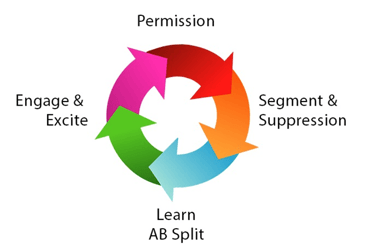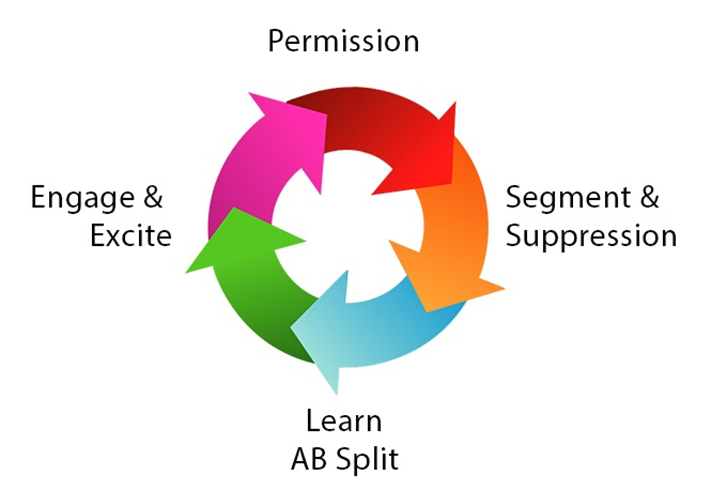Do Some Spring Cleaning On Your Email Marketing
It’s officially spring and time to clean house. The three most important things you can do this spring to clean up your email practices right now are:
- Run your lists through an email validation service.
- Launch an email permission campaign to motivate inactive subscribers who have not opened/clicked to engage with your organization.
- Launch an email engagement campaign for engaged subscribers or include a strong call-to-action (CTA) on your usually email stream to incent subscribers to open/click on your CTA.
Let’s put our gloves and dust mask on because we’re about to shake up some dust and clean house!
Looking For More About Deliverability? |
On With The Seasons
Let's take a look at the recommended seasonal cycle for optimal email deliverability.

Spring Cycle
Indicated by the green and pink arrows on the image above, spring is the best time to run your lists through an Email Validation tool to see if the email addresses you send to are still valid email addresses. You don’t need to run your full lists through an email validation tool if you already enjoy engagement (opens/clicks) from subscribers, but previous bounces and invalids should be analyzed and cleansed at this time. Running your lists through an email validation tool can reduce your bounce rates by 98%.
There are a few services in the email space today that do a great job at taking your list(s) and pinging the email address to see what the response is from the email server. This process shouldn’t only be done on your existing lists in the spring, but any list you may want to introduce to your email database. Never use your email platform to send to a list and let it cycle out invalid email addresses for you because at that point, the damage is done and your email reputation suffers.
Then begin to plan both a permission campaign and an engagement campaign that launches late spring/early summer.
Summer Cycle
Indicated by the red arrow, summer is the time to prepare for the holidays. I know that sounds strange, but the data tells the story that engagement is key to deliverability over the holidays. June/July is the time to reach out with a permission campaign to inactive subscribers to ask them if they would give you permission to continue to send them emails. Any permission decliners should be scrubbed immediately from your email database and flagged appropriately in your CRM database. Non-responders should be suppressed until after the holiday season or scrubbed.
A typical permission campaign consists of a series of 2-3 emails with 80% permission/20% or less promotion content to get a yes/no response from the subscriber while asking permission to continue to send them emails. You can motivate subscribers to select “yes” with an incentive/offer but that offer should take up no more than 20% real estate on the email.
Your already engaged subscribers may become a bit less engaged during the summer months depending on their profession/industry. This is when reaching out with an engagement campaign to make sure they’re still listening is recommended and to start this in June before the summer months come and summer vacation out-of-office auto-replies run rampant.
Campaigns typically consist of a series of 2-3 emails. Instead of a separate campaign, you could introduce engagement CTA into your existing newsletters provided the CTA is called out visually and textually in addition to other newsletter content. Doing so will make sure that late summer/early fall, when ISPs make their inbox algorithms more restrictive ramping up to the holidays, your subscribers have recently engaged and optimizes the chances that they are still getting your messages.
Before You Roll Checklist
- Make sure you have authentication (DKIM, SenderID, DMARC) set-up for your email platform and your IP and/or sending domain.
- If you’re sending from a new or inconsistently used IP address, you need to warm the IP first with consistent volumes of email sends for 2-4 weeks prior to launching either a permission or engagement campaign.
- Fall and winter have their own cycles and deliverability best practices. The HighRoadU.com is a great resource for all things email marketing best practices so watch out for new education opportunities so you can optimize for all seasons.







